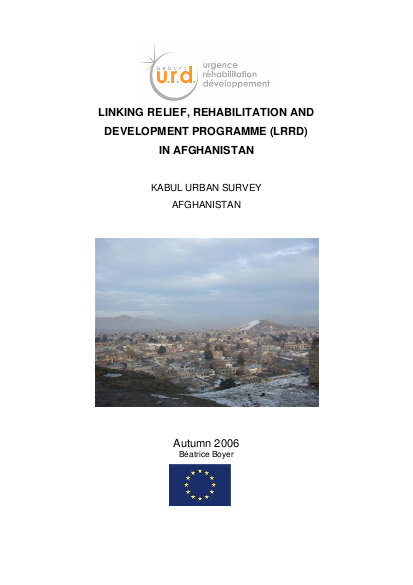
Introduction on the impact of Kabul’s international image “The aftermath of September 11, 2001 precipitated major changes in the political and military situation in Afghanistan”. Kabul city became the scene of civil war theatre, an international military intervention and then an unprecedented influx of international aid. This international focus on Afghanistan and specifically on Kabul city was provoked by an urban event. The sudden and rapid destruction of the famous twin towers in New York city is inextricably linked with the long process of reconstruction in Kabul. Two urban societies have to cope with physical and symbolic impacts following destruction. In each city, images of conflict disaster war in urban areas and urban images are at stake. This introduction highlights the need of symbolic level as well multidimensional needs in the reconstruction process and how much image and city are in dissociable in collective representation and collective urban appropriation.
Urban situation, physical approach and analysis of urban management capacity
Although the urban situation at present is highly deteriorated due to both lack of administrative urban management as to the effects of war on urban areas, Kabul has the potential to become the pleasant city that it was a few decades ago. The challenge in urban development is to restore the quality of a regular structured city, located in a particularly beautiful circle of surrounding high mountains, whilst also dealing with the uncontrolled and chaotic development of urban settlements. But this process is hampered by the current disastrous situation. There is a consensus among all urban actors and urban inhabitants that the physical situation in Kabul city is chaotic, dirty, with uncontrolled housing settlements and buildings, severe traffic congestion, poor maintenance of road networks, insufficient power, unsafe water for domestic use and so on: Kabul needs to upgrade its physical context. Adding to this situation, an inventory of fixtures also includes other inadequacies such as general weakness of urban management, insufficient capacity among urban planners and confusion in institutional roles. The institutional urban sector has taken almost five years after the end of the conflict before becoming a coherent priority. Today an institutional urban framework exists but urban priorities according to the different urban stakeholders are still uncertain and urban policies are in the process of being established. Context of Kabul’s urban reconstruction process
This urban survey was conducted in 2005 and 2006. At the end of 2005, very few reconstruction programmes were being conducted in Kabul city, excluding the private sector. This survey raised different questions about the urban reconstruction process supported by the international community. A draft of understanding has been drawn up covering the difficulties with which Afghan Urban Authorities have to cope with, such as upgrading the physical situation, increasing their urban planning making and management capacities or clarifying the urban institutional roles. The present phase of the survey attempts in the subsequent chapters to provide an overview of Kabul urban situation in 2006, at a critical phase mid-term in the reconstruction process with the support of International Aid. As, again one year later, hardly any new general upgrading of infrastructure is visible in urban areas; this survey attempts to understand the institutional mechanisms that are responsible for these delays.
Resource collections
- UN Habitat - Urban Response Collection
- Urban Response - Urban Crisis Preparedness and Risk Reduction
- Urban Response Collection - Community Engagement and Social Cohesion
- Urban Response Collection - Economic Recovery
- Urban Response Collection - Environment and Climate Change
- Urban Response Collection - Housing, Land and Property
- Urban Response Collection - Urban Crisis Response, Recovery and Reconstruction
- Urban Response Collection - Urban Resilience